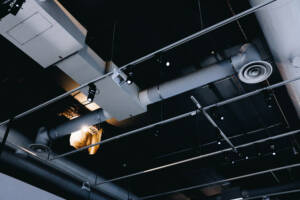In today’s industrial landscape, efficient thermal management is crucial for optimizing performance, reducing energy consumption, and ensuring the longevity of static machinery. By leveraging thermal sensors for automated airflow control, industries can enhance system efficiency and reliability while minimizing operational costs.
The Role of Thermal Sensors in Airflow Automation
Thermal sensors are instrumental in detecting temperature variations and dynamically adjusting airflow within industrial environments. These sensors work in tandem with programmable logic controllers (PLCs) and variable frequency drives (VFDs) to modulate fan speeds, ensuring consistent thermal regulation.
Key Benefits of Automated Airflow Control
- Energy Efficiency: Automated control prevents unnecessary fan operation, reducing power consumption.
- Optimized Equipment Performance: Maintaining ideal operating temperatures extends machinery lifespan.
- Reduced Maintenance Costs: Automated systems mitigate overheating risks, decreasing downtime and maintenance expenses.
- Enhanced Workplace Safety: Proper airflow management reduces exposure to hazardous heat zones and airborne contaminants.

Implementation of Thermal Sensor-Based Airflow Automation
Industries such as manufacturing, data centers, and power plants benefit from integrating smart thermal sensors into their static equipment. Here’s how to implement an automated airflow system:
- Sensor Selection & Placement: Choose high-accuracy thermocouples or RTDs (Resistance Temperature Detectors) for precise thermal readings. Install sensors in high-heat zones for real-time monitoring.
- Integration with Control Systems: Link thermal sensors with PLCs to trigger airflow adjustments based on preset temperature thresholds.
- Automated Fan Control with VFDs: Utilize variable speed drives to adjust airflow dynamically, optimizing cooling efficiency.
- Predictive Analytics & IoT Integration: Deploy cloud-based monitoring to analyze thermal data trends and implement predictive maintenance strategies.
Real-World Applications
- Manufacturing Plants: Automated cooling in motor housings and conveyor systems.
- Data Centers: Dynamic airflow control to prevent overheating of servers.
- Power Generation Facilities: Regulating airflow for turbines and heat exchangers.
- HVAC Systems: Smart temperature-based ventilation in large industrial settings.
Future of Thermal Sensor-Based Airflow Automation
Advancements in machine learning and AI-driven analytics are driving more intelligent airflow automation. Self-learning systems can predict cooling requirements and adjust airflow preemptively, further enhancing efficiency and reliability.
Final Thoughts
Embracing thermal sensor-driven automation in static machinery is a game-changer for industrial operations. By implementing smart airflow control systems, businesses can achieve unparalleled energy efficiency, cost savings, and enhanced equipment longevity.








